Design and Performance Analysis of a Coal Bed Gas Drainage Machine Based on Incomplete Non-Circular Gears
Abstract
:1. Introduction
2. Structure Design and Working Principle of Drainage Machines
2.1. Overall Structure Design of Drainage Machines
2.2. Transmission Scheme and Working Principle of Incomplete Non-Circle Gear Reversing Box
3. The Design of Non-Circular Gear Pair
3.1. Transmission Principle of Non-Circular Gear Pair
3.2. Design of the Non-Circular Gear Pair
3.3. Establishment of the Non-Circular Gear Pitch Curve
3.4. Design of Non-Circular Gear Reversing Box
4. Efficiency Analysis of the New Drainage Machine and the Old
5. Kinematics Analysis Based on ADAMS
5.1. Kinematics Simulation Analysis of the Gear System at Incomplete Non-Circular Gear Reversing Box
5.2. Movement Analysis of Drainage Machine Polished Rod Displacement
6. Industrial Application
7. Conclusions
- (1)
- According to the characteristics of the inconvenient adjustment and low efficiency of the working parameters of the beam pumping unit, a new type of drainage machine is proposed to replace the conventional girder with the non-circular gear as the core for coalbed methane well pumping devices.
- (2)
- Through the transmission principle of the incomplete non-circular gear reversing box, a detailed design calculation of the incomplete non-circular gear is carried out, the non-uniform motion of non-circular gear pair is adopted to realize the variable speed movement in the stroke of the drainage machine, and the automatic reversing is realized by cooperating with other cylindrical gears in the gearbox, then the model of the incomplete non-circular gear and reversing gear system is established.
- (3)
- The paper analyzed the working performance of the drainage machine, and completed the theoretical calculation of the polished rod speed and acceleration; the efficiency of the new type of drainage machine and the conventional beam pumping unit is compared and analyzed simply, and the results show that the efficiency of the new type of drainage machine is about 11% higher than that of the traditional walking beam type pumping unit.
- (4)
- Whether the meshing process of one pair of non-circular gear pairs reaches the theoretical calculation value is verified by ADAMS; then the whole non-circular gear reversing gear train is simulated by ADAMS, and the output shaft speed and the simulation curve of the polished rod displacement are obtained. Based on the comparison with the theoretical values, the accuracy of the design is verified.
Acknowledgments
Author Contributions
Conflicts of Interest
References
- Tang, Y. Coalbed Methane Resources and Prospects in China; Academic Year of the Chinese Geological Society: Beijing, China, 2013. [Google Scholar]
- Feng, C.B. Synthetic description of status and energy-saving method on oil-abstracting engines in oilfield. Inn. Mong. Petrochem. Ind. 2008, 34, 31–33. [Google Scholar]
- Li, D.; Fan, J.; Wang, L.; Kou, C. Curved beam pumping unit. Oil Forum 2013, 32, 63–65. [Google Scholar]
- Fu, H.; Zou, L.; Wang, Y.; Feng, Z.; Song, Z. Study on design and simulation analysis of the double horse-head pumping unit based on the compound balance structure. Proc. Inst. Mech. Eng. Part C 2015, 229, 3034–3046. [Google Scholar] [CrossRef]
- Liu, C. Energy-saving improvement for convention oil pumping unit of oilfield. Energy Conserv. Petroleum Petrochem. Ind. 2011, 1, 25–27. [Google Scholar]
- Fan, W.M.; Song, J.C. Design of a new energy-saving driving system for oil pumping unit. Mach. Des. Manuf. 2014, 7, 68–71. [Google Scholar]
- Li, Q.; Deng, Z.; Chen, H.; Peng, X. No beam pumping unit’s dynamic analysis. J. Liaoning Shihua Univ. 2014, 34, 50–54. [Google Scholar]
- Liu, J.; Cui, J.; Xiao, W.; Fu, D.; Yang, L.; Li, L. Design of mechanical reversing device without switching for pumping unit. Oil Field Equip. 2015, 44, 26–29. [Google Scholar]
- Qi, Y.-G.; Chen, J. Dynamics analysis of electrical machinery commutation for intelligent pumping unit. Oil Field Equip. 2008, 37, 62–65. [Google Scholar]
- Niu, S.G.; Zhao, Y.H. The research of chain type hydraulic pumping unit of long stroke. Mach. Tool Hydraul. 2005, 8, 87–88. [Google Scholar]
- Shao, Z.M.; Niu, S.G. The study of long stroke pumping unit with hydraulic-chain drive. Oil Field Equip. 2005, 4, 14–16. [Google Scholar]
- Cui, J.; Xiao, W.; Feng, H.; Dong, W.; Zhang, Y.; Wang, Z. Long stroke pumping unit driven by low-speed permanent magnet synchronous motor. Soc. Petroleum Eng. 2014. [Google Scholar] [CrossRef]
- Zhang, Z.; He, L. PMSM control simulation based on pumping unit. TELKOMNIKA Indones. J. Electr. Eng. 2014, 36, 108–111. [Google Scholar] [CrossRef]
- Zhao, Y.; Yan, H.; Wang, S.; Zhao, D.; Liu, D.; Xu, H.; Yang, X. Research on multi-section effective linear motor pumping unit. In Proceedings of the IEEE International Conference on Mechatronics and Automation, Harbin, China, 7–10 August 2016; pp. 1855–1859. [Google Scholar]
- Ma, W.Z.; Zhang, H.M.; Sun, J.Y.; Tian, D.B.; Pang, H.F. Research on the design of linear drive motor of new pumping unit. Adv. Mater. Res. 2012, 433–440, 5025–5031. [Google Scholar] [CrossRef]
- Dunkerley, K.J. Mechanism; Longmans Green and Co Publisher: London, UK, 1910. [Google Scholar]
- Ma, Y. Gear Design of Variable Drive Ratio Limited Slip Differential. Ph.D. Thesis, Wuhan University of Technology, Wuhan, China, 2007. [Google Scholar]
- Marius, V.; Laurentia, A.; Ana, C. A brief synthesis of noncircular gears. Constanta Marit. Univ. Ann. 2011, 16, 191–196. [Google Scholar]
- Bair, B.W. Computerized tooth profile generation of elliptical gears manufactured by shaper cutters. J. Mater. Process. Technol. 2002, 122, 139–147. [Google Scholar] [CrossRef]
- Bijlsma, B.G.; Radaelli, G.; Herder, J.L. Design of a compact gravity equilibrator with an unlimited range of motion. In Proceedings of the ASME International Design Engineering Technical Conferences and Computers and Information in Engineering Conference (IDETC/CIE), Charlotte, NC, USA, 21–24 August 2016. [Google Scholar]
- Hebbale, K.; Li, D.; Zhou, J. Study of a non-circular gear infinitely variable transmission. In Proceedings of the ASME 7th Annual Dynamic Systems and Control Conference Research Workshop Israel Science Foundation on Infinite Products of Operators and their Applications, San Antonio, TX, USA, 22–24 October 2014. [Google Scholar]
- Doric, J.Z.; Klinar, I.J. Efficiency of a new internal combustion engine concept with variable piston motion. Therm. Sci. 2014, 18, 113–127. [Google Scholar] [CrossRef] [Green Version]
- Okada, M.; Takeda, Y. Synthesis and evaluation of non-circular gear that realizes optimal gear ratio for jumping robot. In Proceedings of the IEEE/RSJ International Conference on Intelligent Robots and Systems (IROS), Tokyo, Japan, 3–8 November 2013; pp. 5524–5529. [Google Scholar]
- Litvin, F.L. Noncircular Gears: Design and Generation; Cambridge University Press: Cambridge, UK, 2009. [Google Scholar]
- Litvin, F.L.; Gonzalez-Perez, I.; Fuentes, A.; Kenichi, H. Design and investigation of gear drives with non-circular gears applied for speed variation and generation of functions. Comput. Methods Appl. Mech. Eng. 2008, 197, 3783–3802. [Google Scholar] [CrossRef]
- Sun, K.; Zheng, F.; Chen, D.; Tong, T. The design method and analysis of non-circular gear based on variable ratio function. J. Mech. Transm. 2013, 37, 87–89. [Google Scholar]
- Zhang, J.; Bin, Y.U.; Shui, J.; Qi, X. Design of the pitch curves of non-circular gears based on MATLAB. Mach. Electron. 2016, 34, 17–20. [Google Scholar]
- Lei, L.I.; Chang-Long, D.U.; Yang, S.G. Solving of non-circular planetary gear pitch curve based on MATLAB. Coal Mine Mach. 2008, 29, 23–25. [Google Scholar]
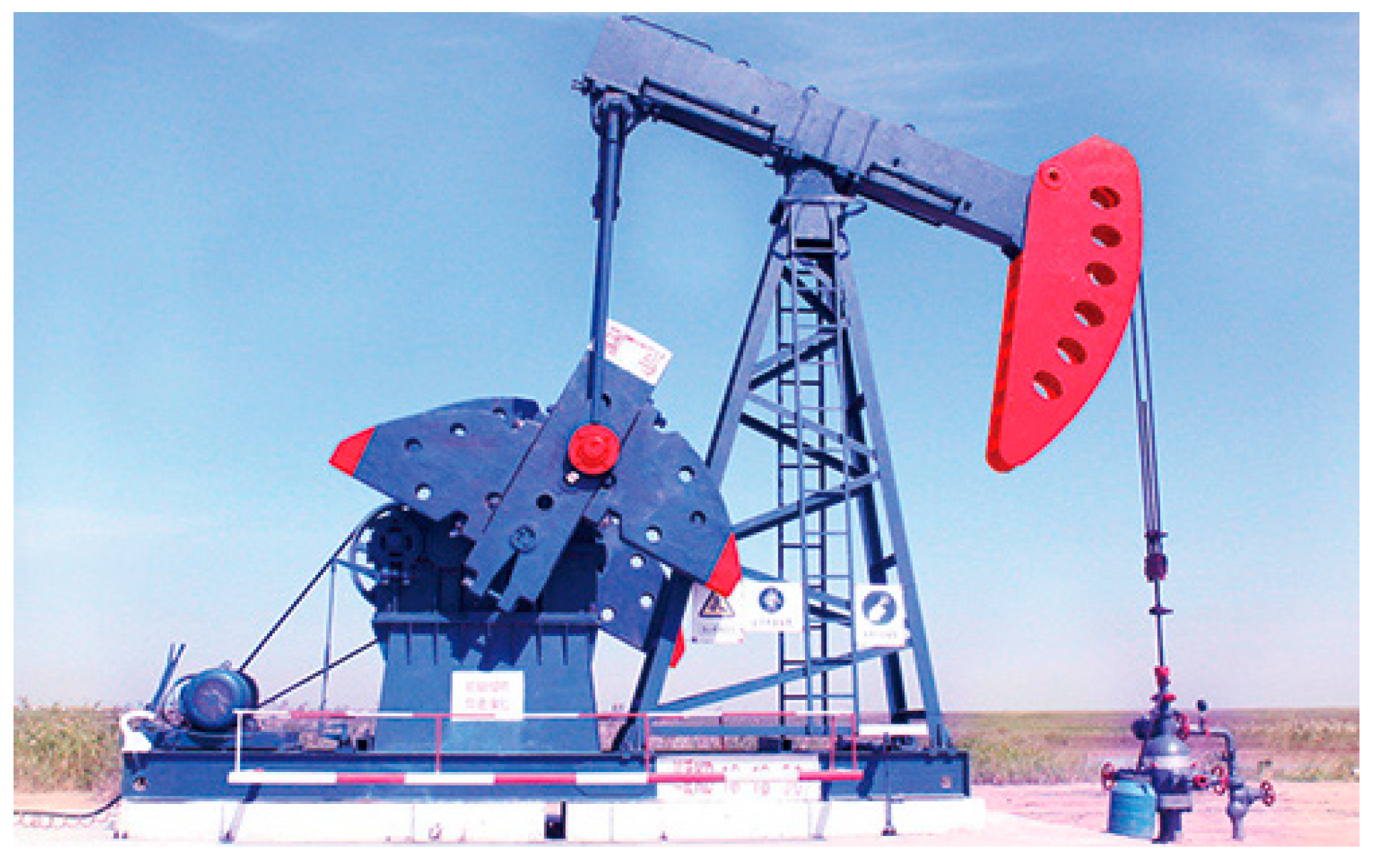
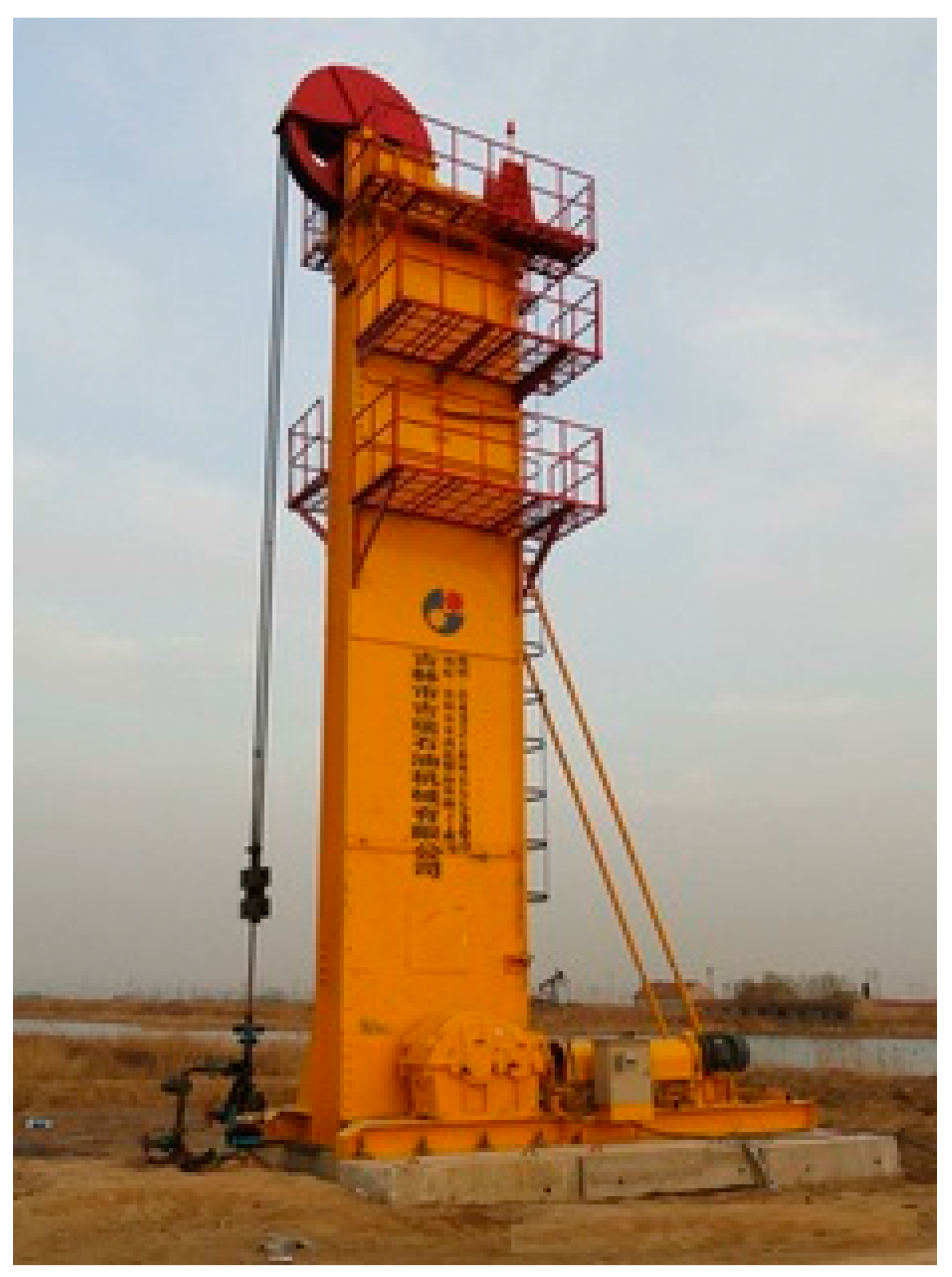
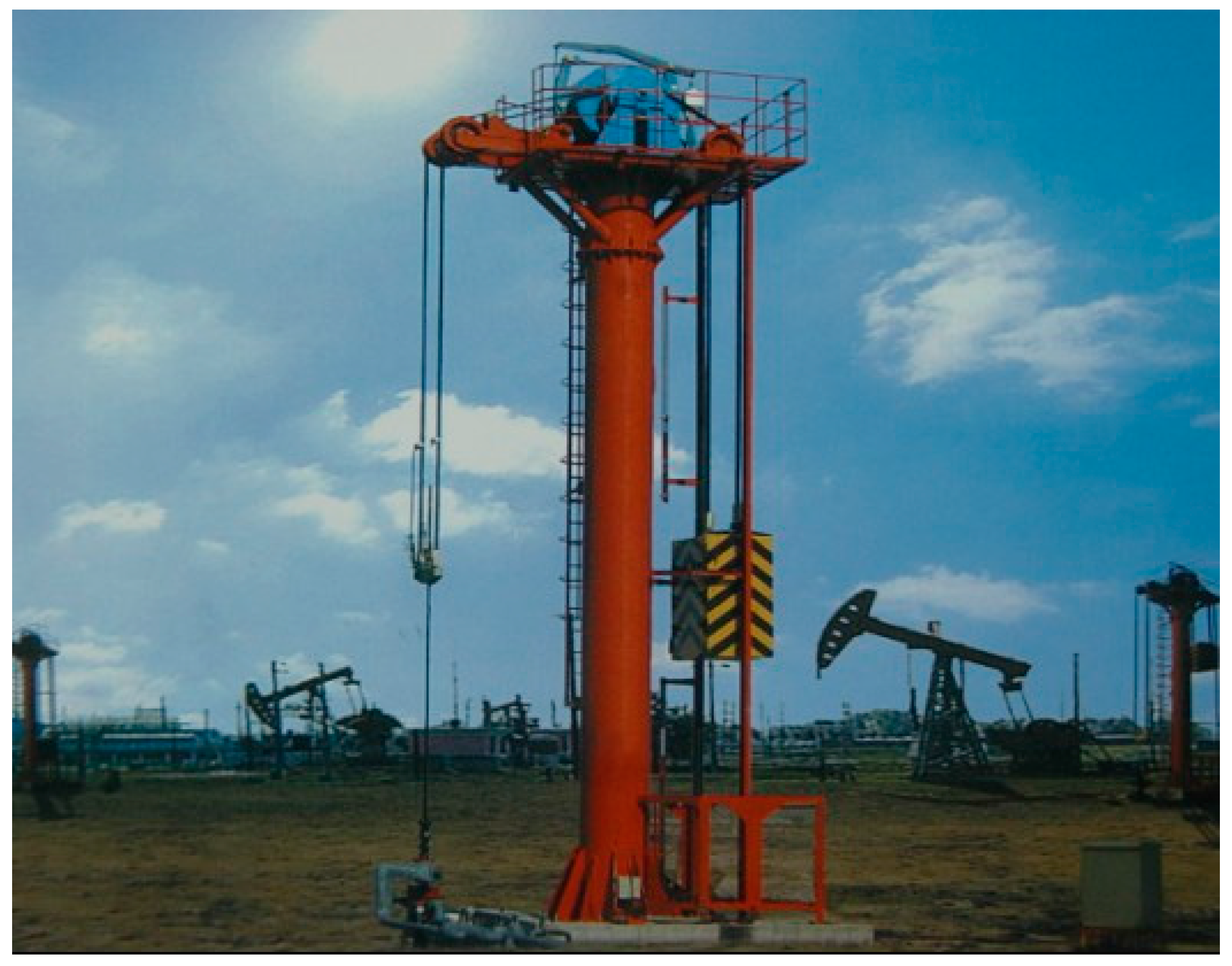




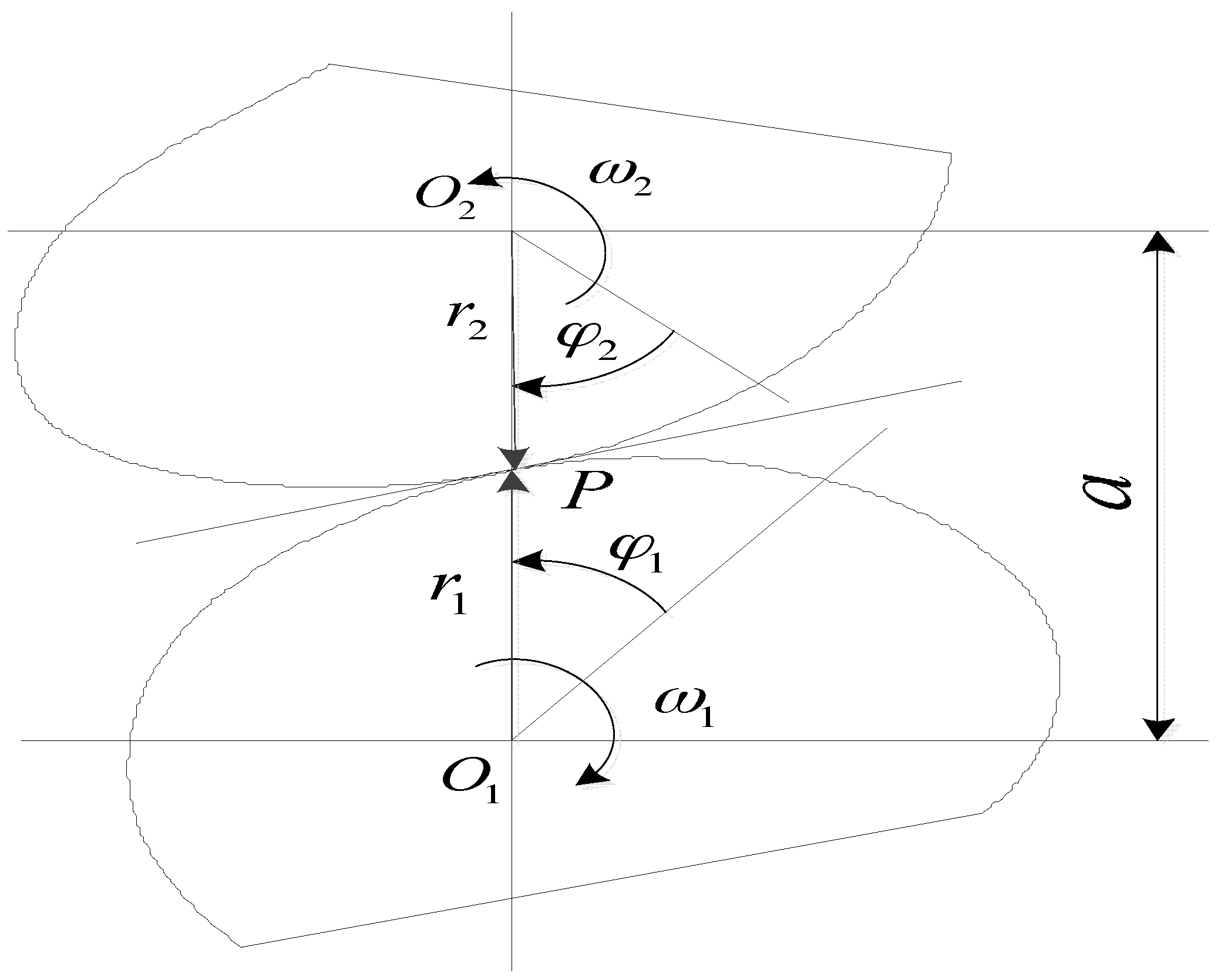
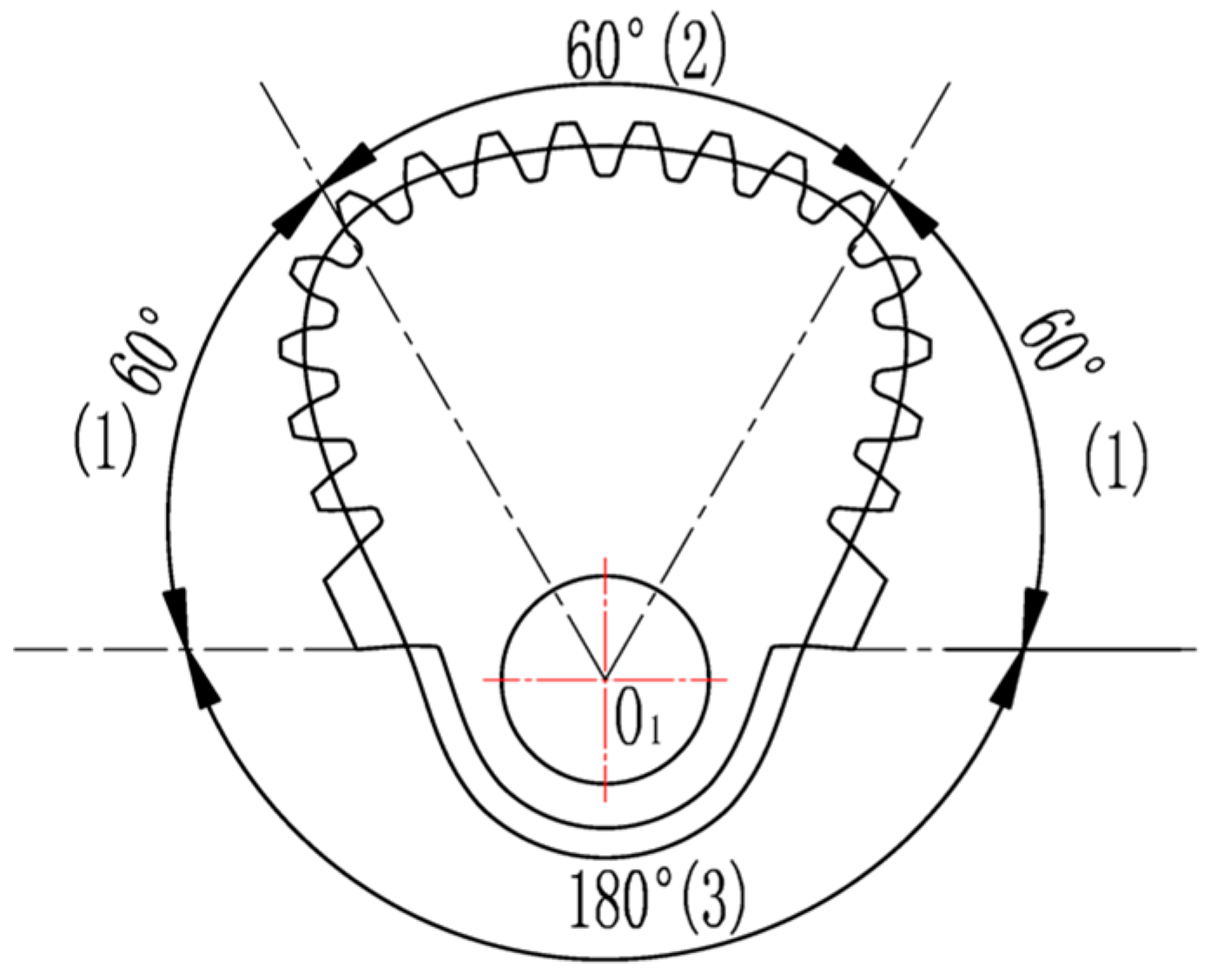
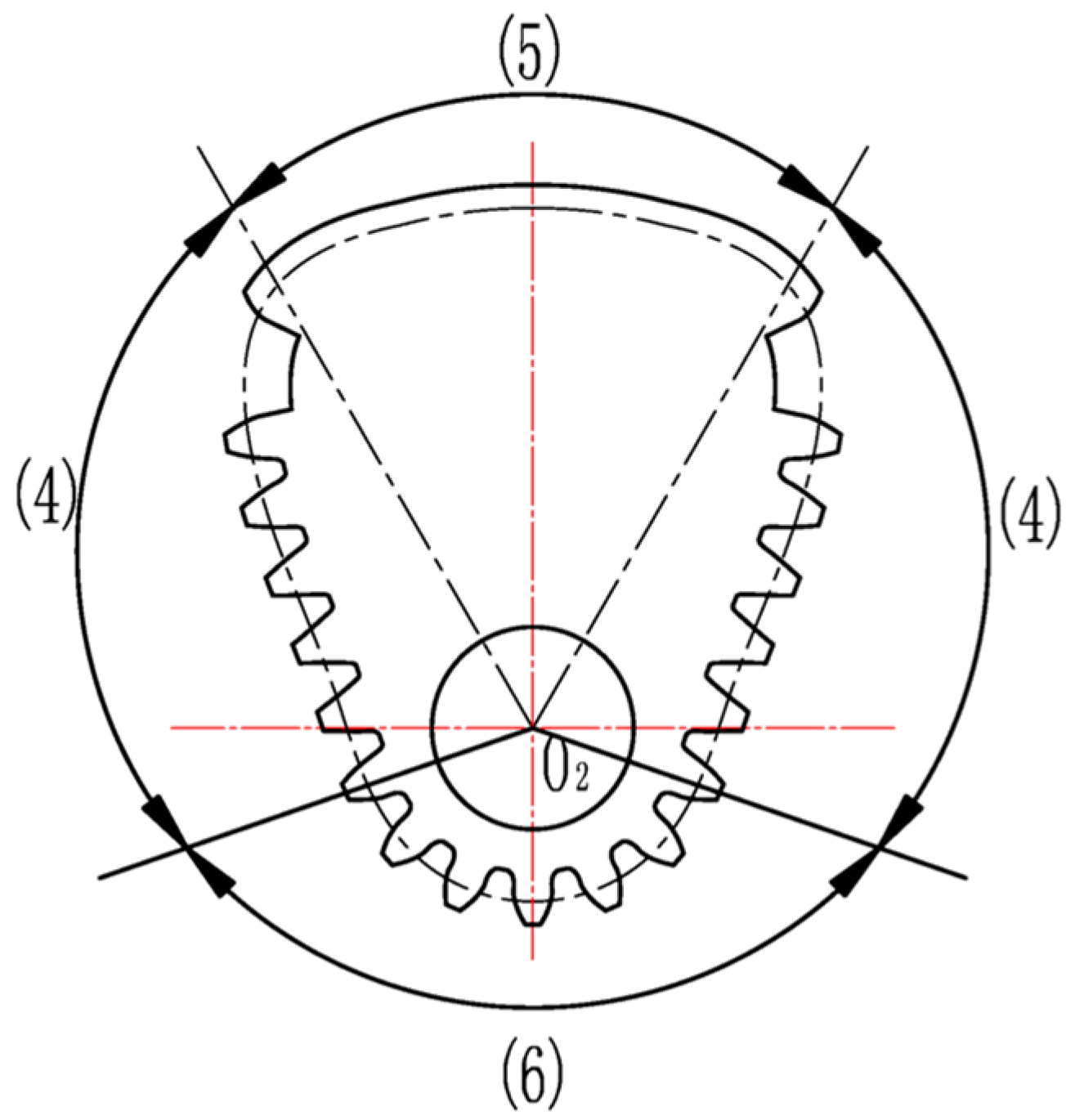

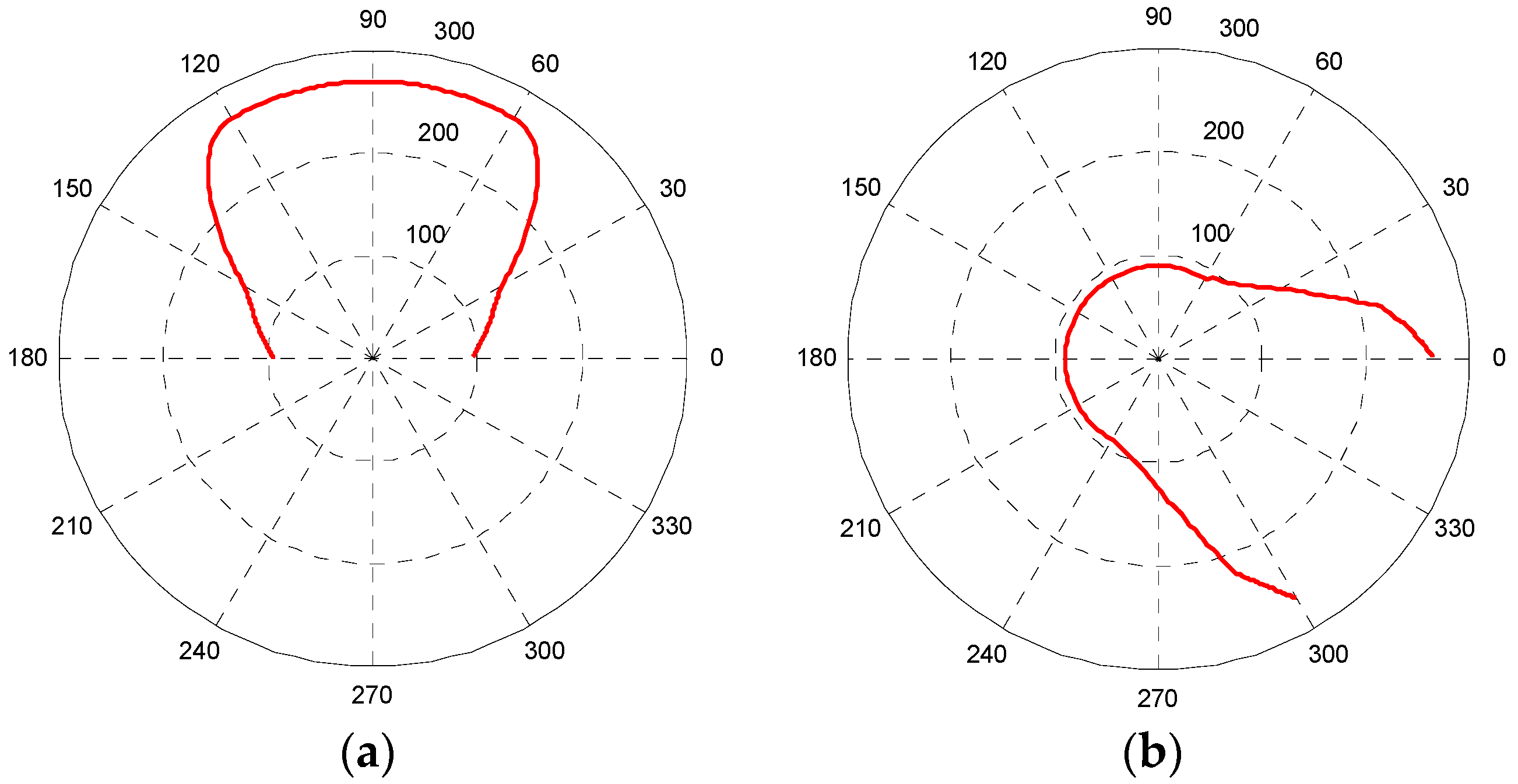
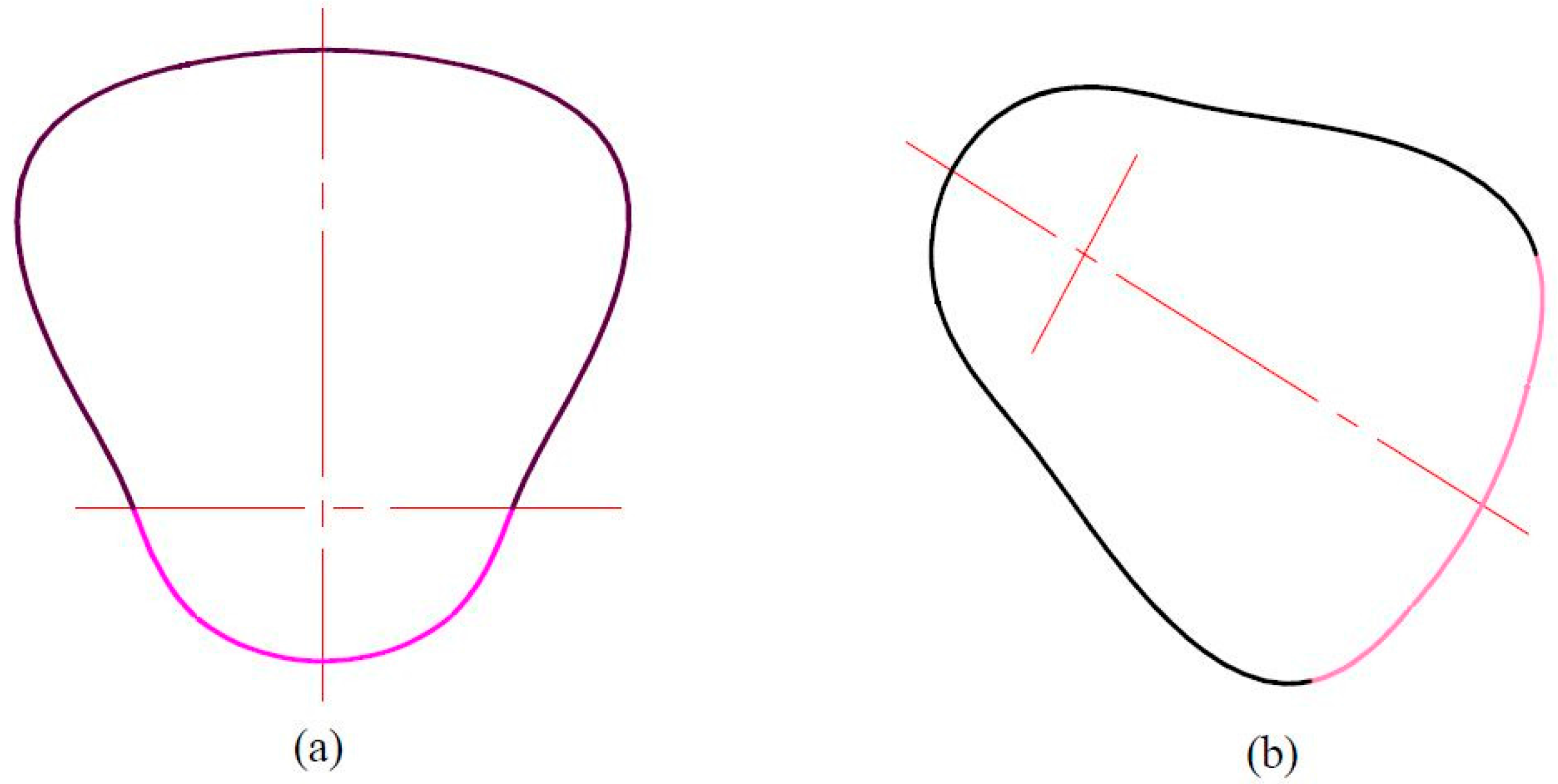
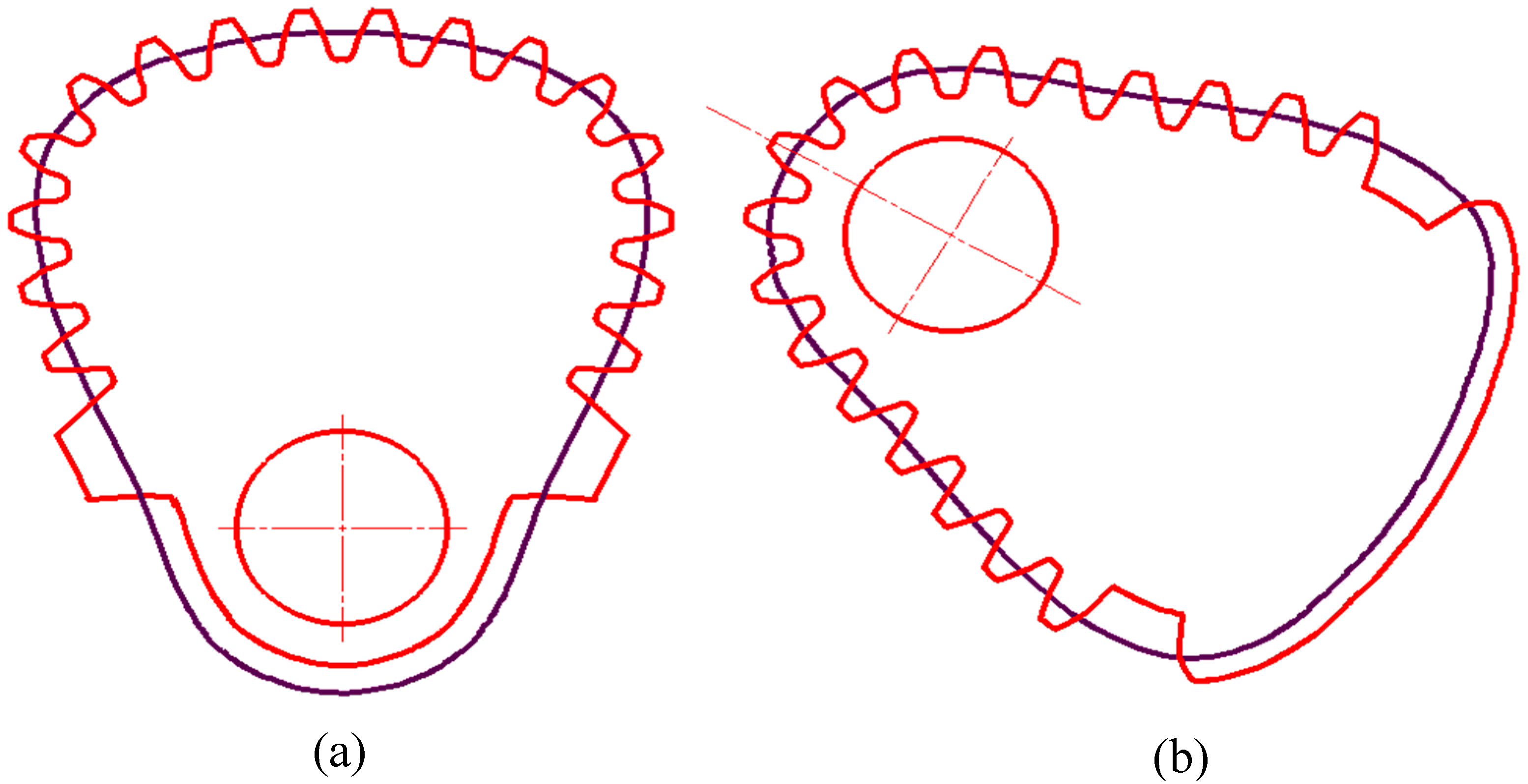
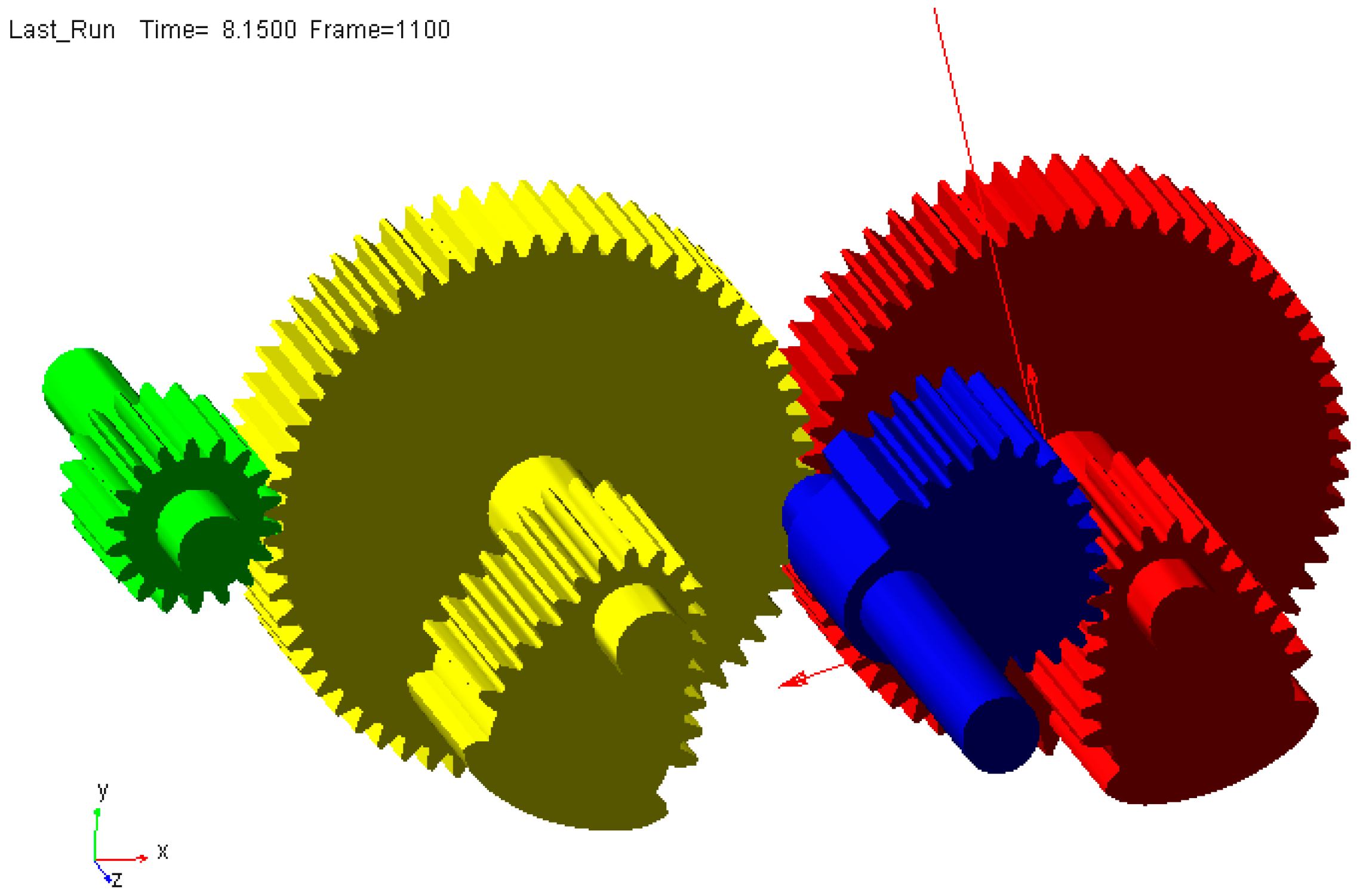
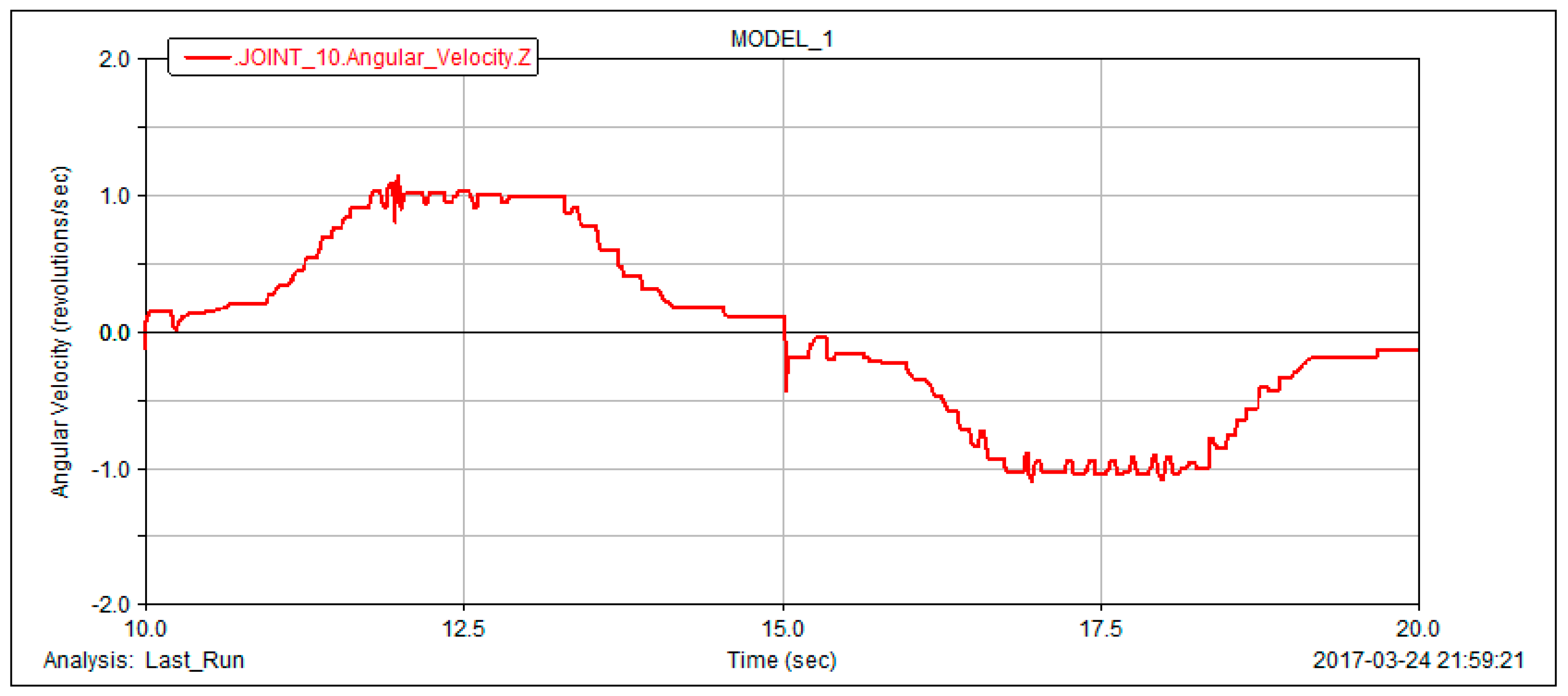

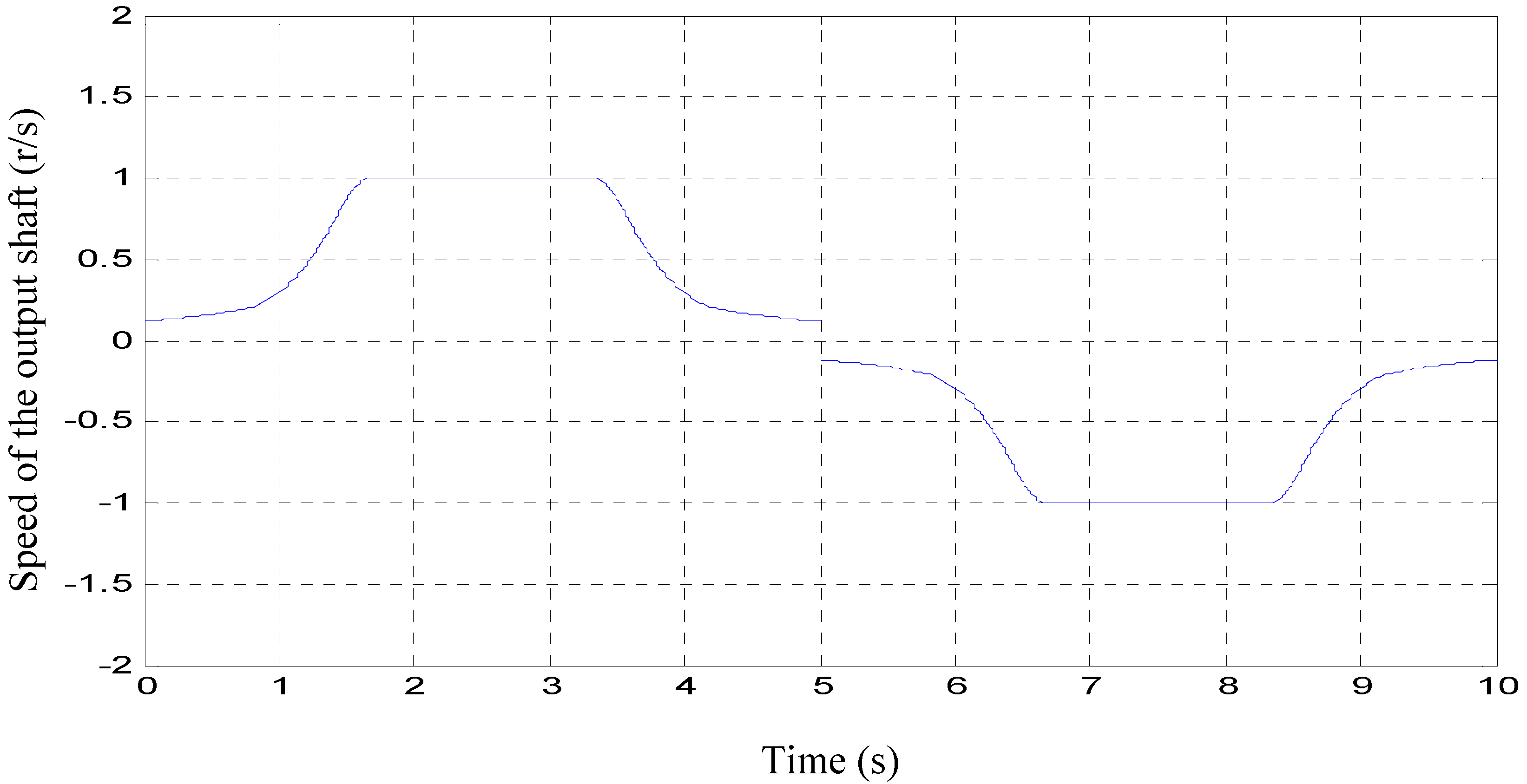
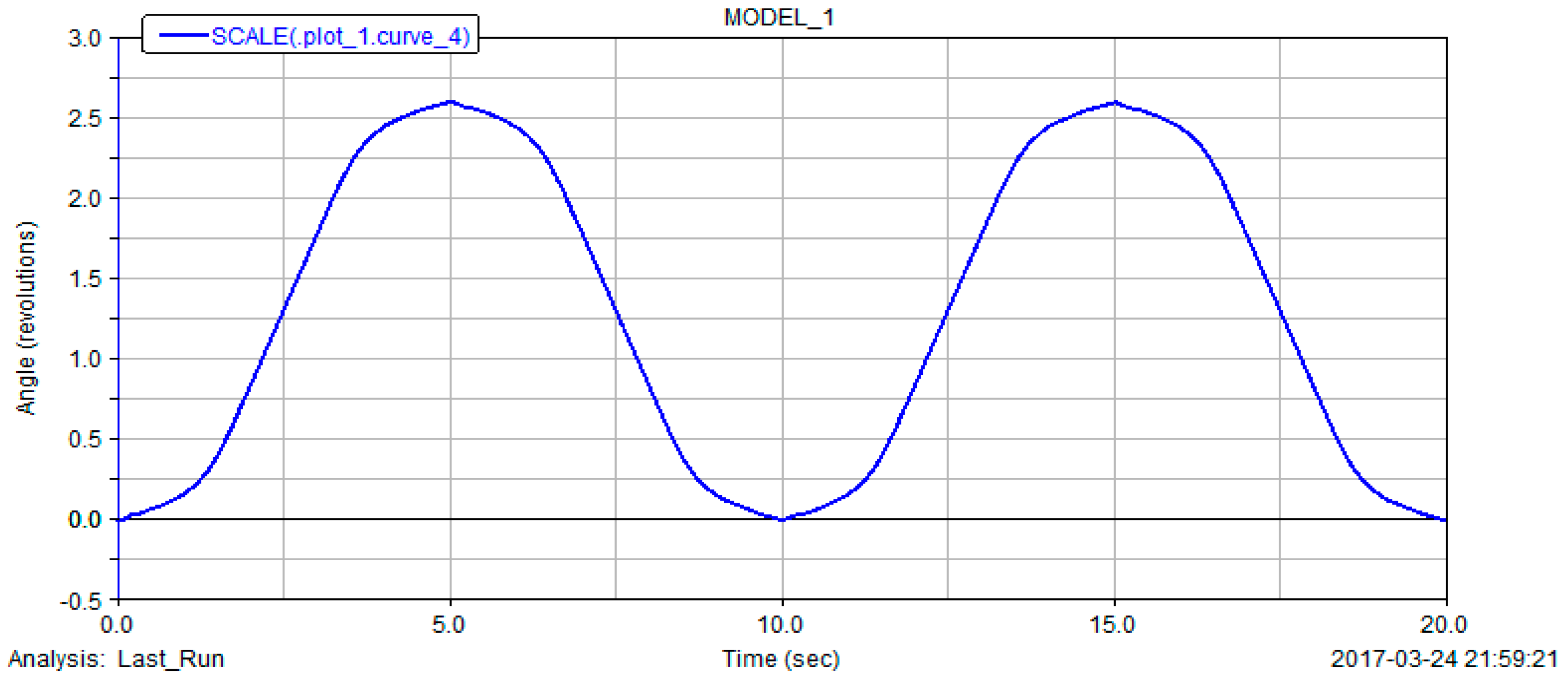
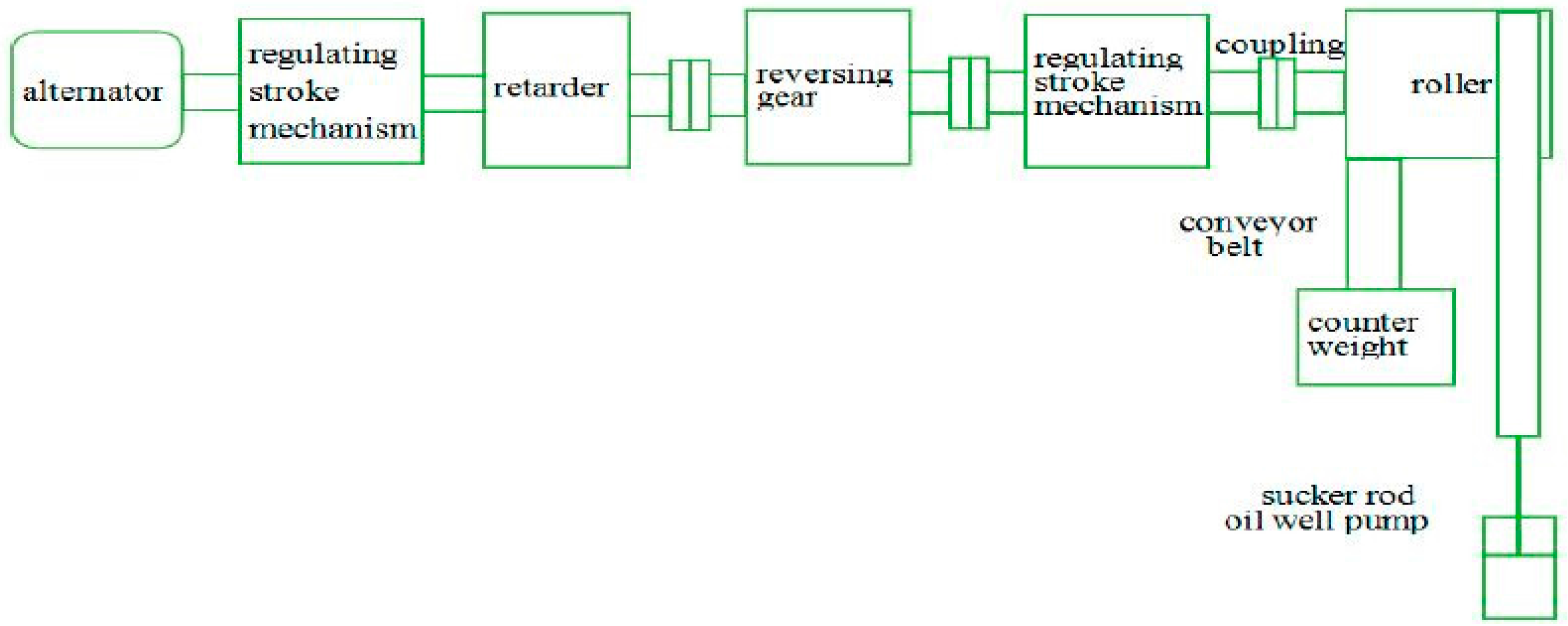
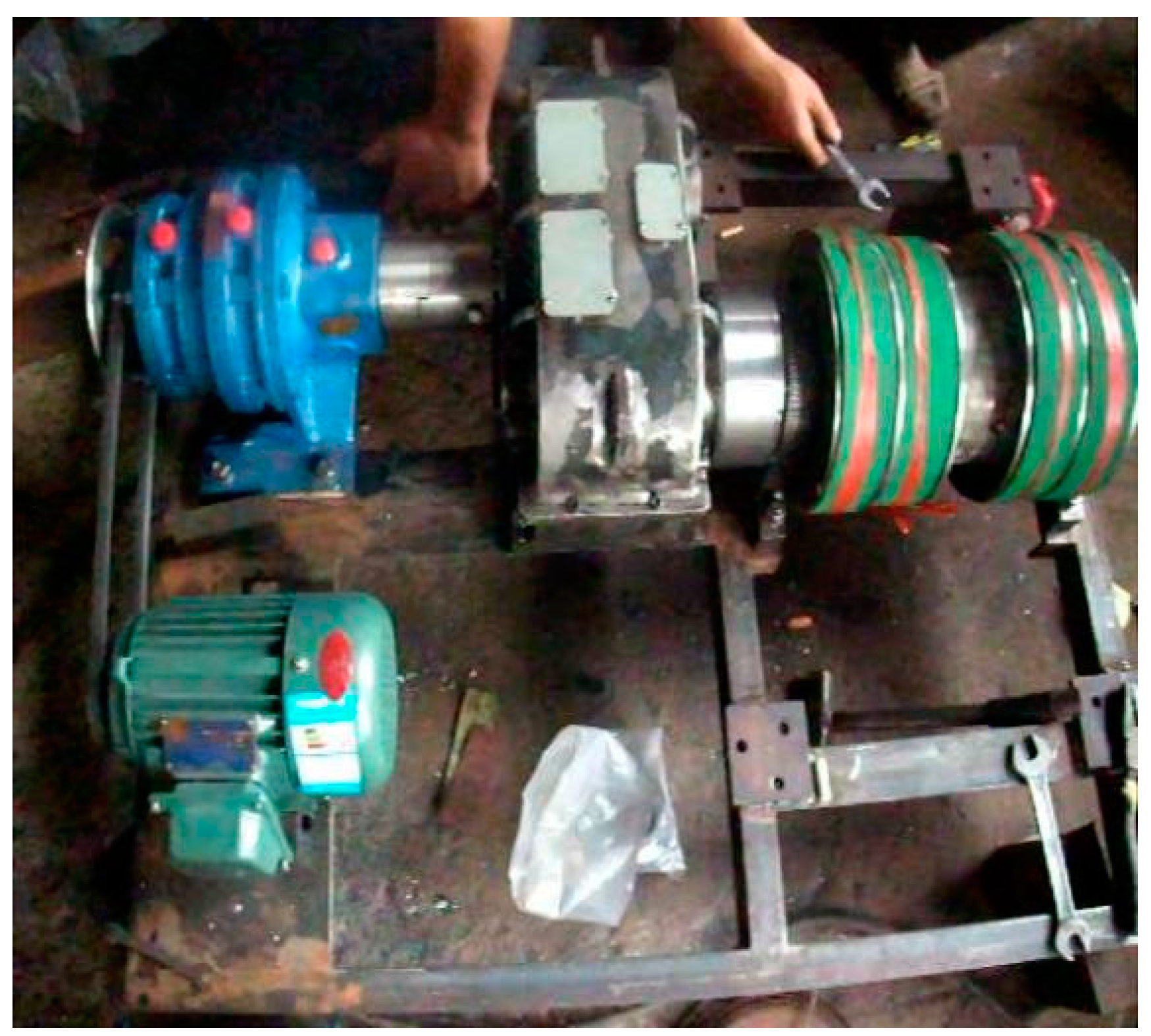
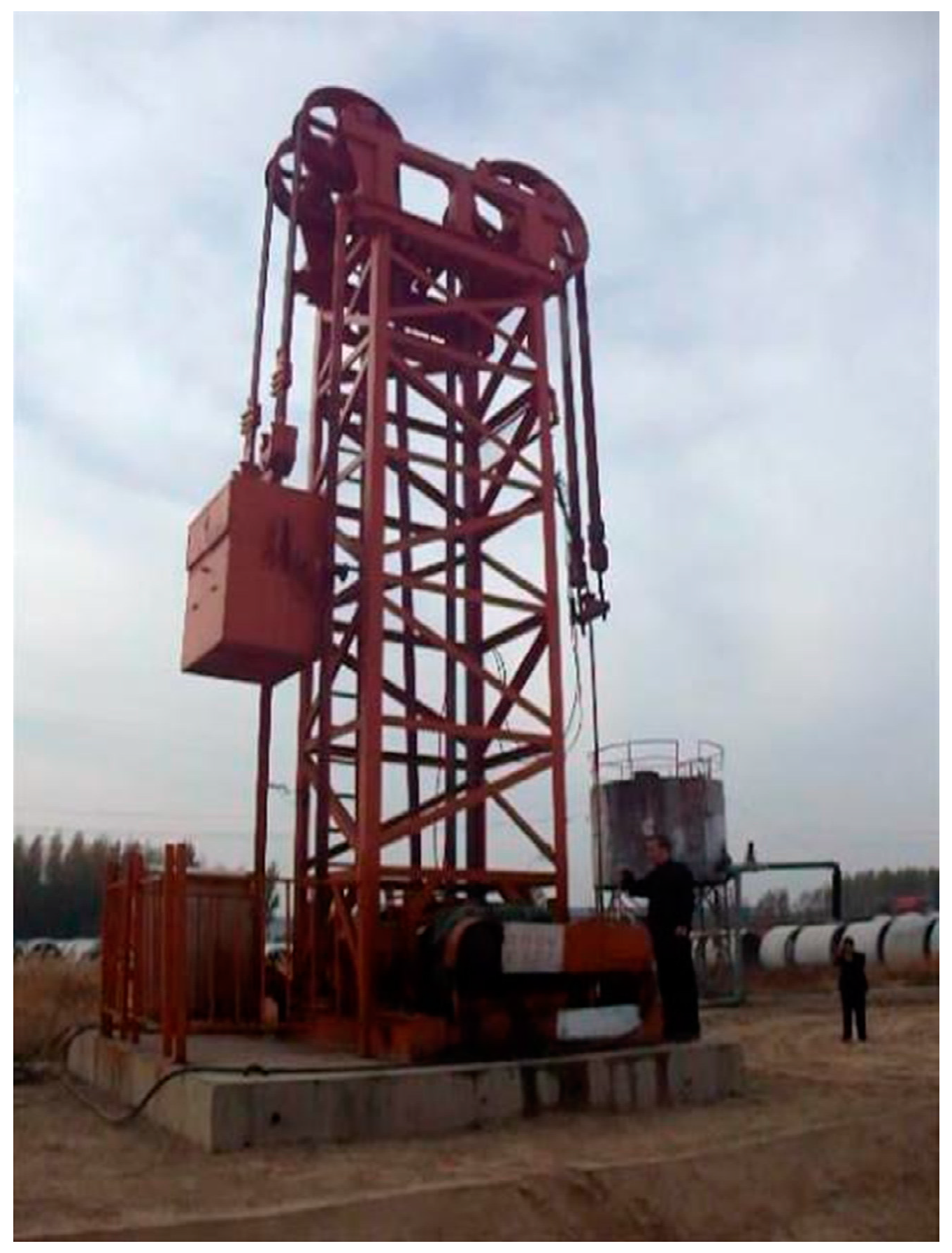
| Gear Name | Modulus | Number of Teeth | Angle of Pressure | Breadth of Tooth (mm) | Number |
|---|---|---|---|---|---|
| driving non-circular gear | 12 | 18 | 20 | 250 | 1 |
| driven non-circular gear | 12 | 17 | 20 | 250 | 2 |
| Standard cylindrical spur gear (big) | 12 | 60 | 20 | 190 | 2 |
| Standard cylindrical spur gear (small) | 12 | 18 | 20 | 200 | 1 |
© 2017 by the authors. Licensee MDPI, Basel, Switzerland. This article is an open access article distributed under the terms and conditions of the Creative Commons Attribution (CC BY) license (http://creativecommons.org/licenses/by/4.0/).
Share and Cite
Xu, G.; Hua, D.; Dai, W.; Zhang, X. Design and Performance Analysis of a Coal Bed Gas Drainage Machine Based on Incomplete Non-Circular Gears. Energies 2017, 10, 1933. https://doi.org/10.3390/en10121933
Xu G, Hua D, Dai W, Zhang X. Design and Performance Analysis of a Coal Bed Gas Drainage Machine Based on Incomplete Non-Circular Gears. Energies. 2017; 10(12):1933. https://doi.org/10.3390/en10121933
Chicago/Turabian StyleXu, Guiyun, Dezheng Hua, Weijun Dai, and Xiaoguang Zhang. 2017. "Design and Performance Analysis of a Coal Bed Gas Drainage Machine Based on Incomplete Non-Circular Gears" Energies 10, no. 12: 1933. https://doi.org/10.3390/en10121933




